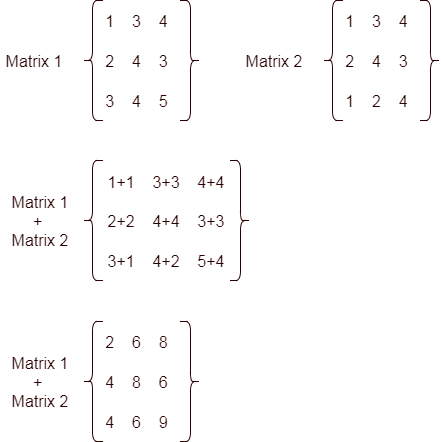In Java, matrix addition can be achieved by using the binary “+” operator. A matrix, also known as an array of arrays, can be added, subtracted, and multiplied. By employing appropriate algorithms, it is possible to perform matrix addition operations in Java efficiently.

To subtract two matrices in Java, we can utilize the “-” operator. Matrices, being arrays of arrays, can be subtracted element-wise. Here is a simple example demonstrating matrix subtraction with two matrices of size 3 rows and 3 columns.
public class MatrixAdditionExample{
public static void main(String args[]){
//creating two matrices
int a[][]={{1,3,4},{2,4,3},{3,4,5}};
int b[][]={{1,3,4},{2,4,3},{1,2,4}};
//creating another matrix to store the sum of two matrices
int c[][]=new int[3][3]; //3 rows and 3 columns
//adding and printing addition of 2 matrices
for(int i=0;i<3;i++){
for(int j=0;j<3;j++){
c[i][j]=a[i][j]+b[i][j]; //use - for subtraction
System.out.print(c[i][j]+" ");
}
System.out.println();//new line
}
}}
Output:
2 6 8 4 8 6 4 6 9
In conclusion, the provided Java program effectively performs matrix addition by iterating through each element of the matrices and adding the corresponding elements together, resulting in a new matrix that represents the sum of the two input matrices. Follow tutorials.freshersnow.com to learn more.
